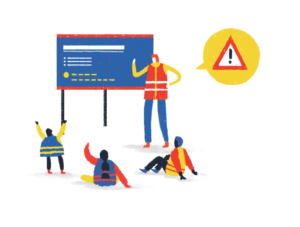Taking the time to prepare participatory activities can address some of the key challenges posed by the process. The preparation includes choosing the tools, facilitators spending time to develop trusting relationships with the children, understanding the children’s diversity, and developing activities accordingly. This keeps in mind that children’s experiences and responses to displacement may differ.
Both children’s and their caregivers’ routines and responsibilities should be taken into consideration when planning the timing of activities. For example, some groups may not be able to participate on some days or at certain times because of schooling, work, childcare responsibilities or religious practices. Likewise, if the activity is aimed at observing participants’ use of a space, then public holidays or the time of day may affect outcomes.
During the preparation, ensure that the time allocated for activities is not too tight, but rather allows for flexibility and the incorporation of unstructured play, as this might result in unexpected valuable inputs. Preparing a box with various tools with which to engage children can help with this: stickers, puppets, building blocks, soft balls, etc.

To organise community meetings, coordination with local partners and stakeholders is essential for ensuring inclusivity and transparent communication. Taking the time to prepare for community activities is crucial. This includes deciding on the:
- number of participants, e.g. small or big groups;
- profile of participants, e.g. age, gender, nationality, race/ethnicity, etc (ensuring fair representation);
- outreach strategy, e.g. door to door, through existing database, etc;
- location of activity;
- timeline;
- selection of facilitators;
- tools to be used based on the objectives of the intervention and participants.
Choosing where to conduct participatory design activities with children is very important for ensuring that children feel comfortable to speak and share their opinions. The location should be familiar, accessible, child- friendly, safe, welcoming, and with available amenities (water, bathroom). Examples include their classroom, their school’s courtyard, a social club, public space, community centre and, when possible, on the site of the intervention. Children’s safety is of the utmost importance, and someone known by the children should be part of the process.
To ensure the safety of children in the activities that involve them being on site, children should be equipped with hi-vis gear, and the facilitator should conduct an induction session beforehand, including information about the code of conduct whilst on site.



